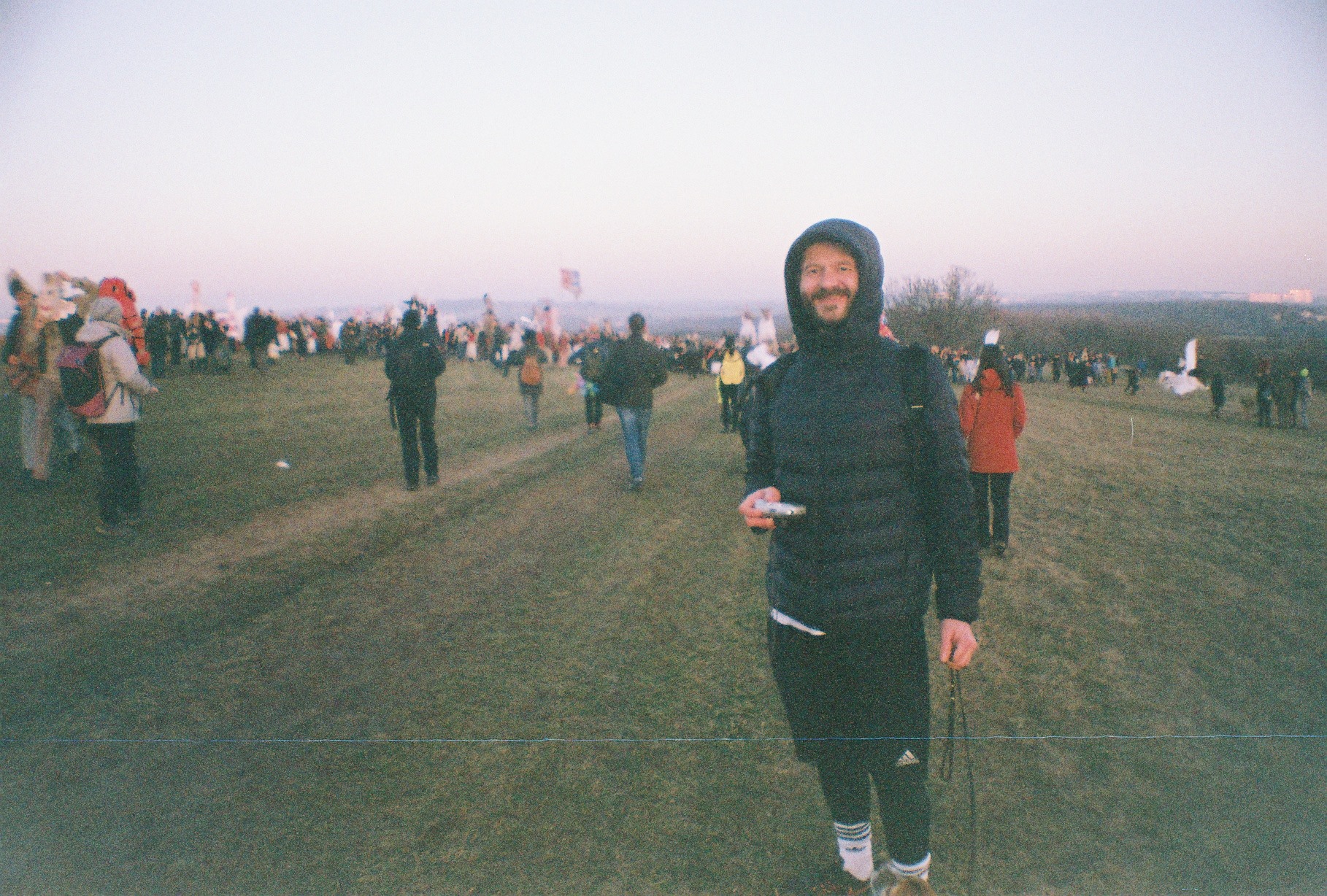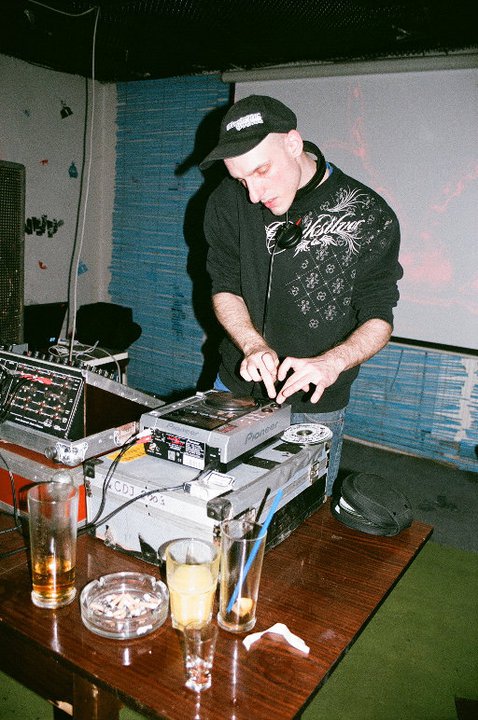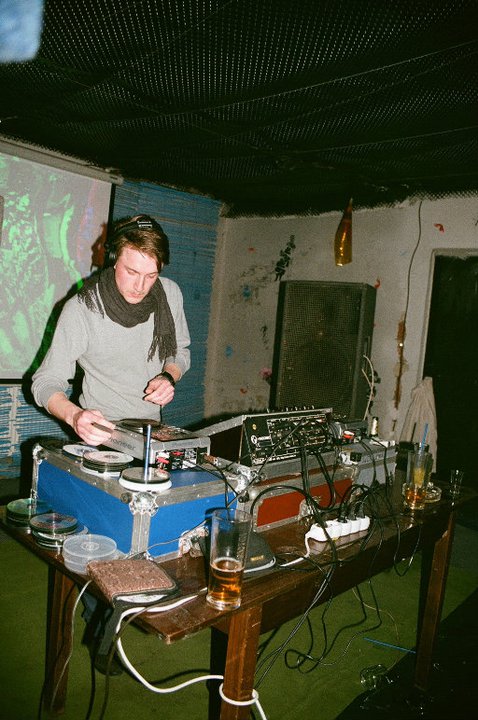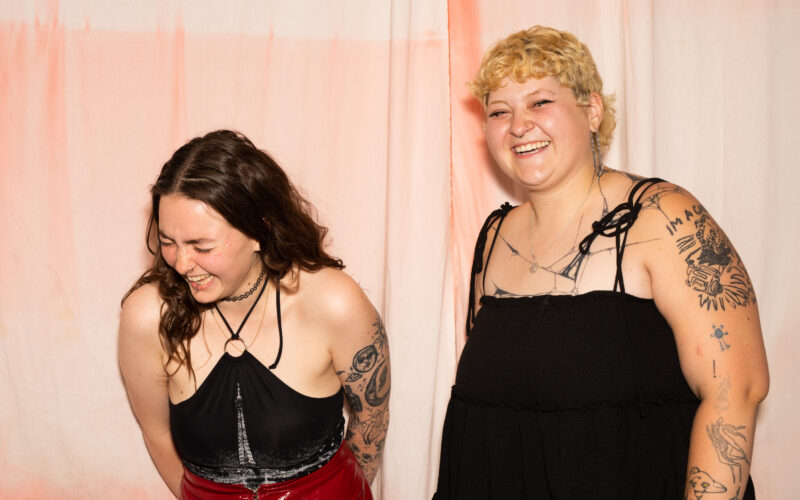“Everyone wanted to look like a character from Trainspotting”: In Conversation with Míra Valeš
A short trip into the history of Czech clubbing, the queer scene and the near future of Pioneer Prague.

Míra Valeš by Daniela Hannova
On the upcoming weekend you’re kicking off yet another event in the Pioneer Prague ‘portfolio’. How did Aqueerius come to life?
Aqueerius had a bumpy upbringing. I happened to be at Panorama bar around 2017, dancing around. I remember there were a few of my favourite DJs like Josh Caffe from London, and Alena (Alinka) from Chicago, and also Cormac and my friend Hannah. We just chatted and thought it would be a cool idea to do some queer fest in Prague that would be open to all sides and levels of queer culture. Cormac later came up with the name and was instrumental for the further development. I already organized DICK parties in Ankali at that point, but this was meant to be way more colourful, and reflecting more on different tribes within the queer community.
It however took another few years because when we finally decided to put it on at Ankali, it was right before the covid which slowed the process quite a bit. I am hoping this will be a really mellow, joyous occasion for all sorts of queer people and allies to come together. And that it will become an annual tradition.
I am curious how you got here so let’s take a detour. What did the scene look like when you became aware or a part of it?
Well, how much time do you have? Because this could be a very long story. Btw, one of the reasons I happily booked Tvyks for Aqueerius was that he is the link to that original, first era of clubbing. He started playing records in Prague around 1992–1993.
I was raised in Pilsen and I started being aware of electronic music in the mid 90s which was the first time I could go out. I was around 16-17 at that time. During this period there were little clubs in every bigger town or smaller city in Czechia. There were clubs such as Mazaný králíček or Subway in Pilsen which were surrounded by DJs and people who enjoyed clubbing. There were also clubs like Barumba in Olomouc, and of course quite a few clubs in Prague such as Radost FX, Roxy, Punto Azul.
It was initially a small scene but club culture became a major thing around 2000, when almost every young person would go clubbing on Friday or Saturday. Mind you, this was very, very early internet, no smartphones, no streaming services etc. So you either went out dancing, or you went to a concert, or you stayed home which meant you watched a TV … which was like three TV channels. At this point clubbing was a regular activity for a lot of people. Compared to that, clubbing, or the electronic music scene, now seem like quite a niche interest for a relatively narrow group of people.
To paint a full-er picture, was there a specific fashion angle to the culture back then?
Totally. There were few shops such as Black Market and Devátá vlna that were selling clothes specifically for clubbers. The really popular thing was heavy boots called Gladiators, black unisex skinny jeans, tight nylon t-shirts, sport trainers. Girls often cropped their hair super-short, Sinead O’Connor or Mark Renton style, dyed it white, pink or bright red, guys did something similar. Everyone wanted to look like a character from Trainspotting.
As a promoter you have been active since 2009. Was that the time when house music hype was peaking?
I lived and studied abroad for a few years and came back in 2008, which was this in-between time in terms of music and culture. Since I was surrounded by a few friends who were always saying that there isn’t any cool outlet for gay and queer people, we started talking about doing something low-key, for us and our friends. I called it Pioneer parties, which at the time was supposed to be a reference to communist youth organization Pionýr, not necessarily a reference to the DJ equipment brand.
However I need to correct the timing of the house music hype. It was actually the opposite. I think by like 2005 the local house and techno music scene had become so bloated and overtly commercial that it was a bit of a joke. Big brands like Marlboro’s or Coca Cola were abusing it by branding their parties with logos, house music was heavily used in commercials etc. So basically by this time (2008-2009), the initial wave of electronic music was already a bit “over”. It was a time when people were heavily into guitar music, and the only electronic genres that were still a bit popular in clubs were electro, mash-ups and some drum’n’bass. All the major big parties, like Shake in Roxy, were long past their heydays by that time. House and techno started coming back a little later, majorly in 2013 and onwards I’d say.
So when you started in 2009, what else was there?
As I said, it was a bit of an in-betweener. But by 2008 the financial crisis hit Europe, and it had a really important, healing effect on clubbing, and all sorts of small businesses.
You need to understand where Prague was by late ’00s; it was a pretty expensive place, full of trashy cash cows such as tacky souvenir shops, casinos and some horrid tourist traps. This still exists but it’s nowhere near the numbers of those times. Lot of these places had to close down during the crisis because Prague lost almost all the tourists. This meant that rents of commercial spaces became super low. Almost overnight, people who couldn’t even dream of renting a space before, could, with a bit of savings, open a little bar or a club all of a sudden.
In terms of what was happening on the music scene, this was the time when some old-timers started organising gigs. The longest lasting ones are Václav of Rare, or Kuba Hošek and Anežka of A.M. 180 collective. Also, queer girls used to promote more events, such as Klit or Queer Eye festival.
We did the first Pioneer parties in places that no longer exist – the first few took place in Pilot (now cinema Pilotů) which was run by a fairly crazy Aussie guy who later disappeared. Then we moved it to Final club, which was a lovely bolthole in Žižkov, a weird mix of artists, junkies, and misfits who came there for their last beer or a joint. We did the party full of homos in the basement and on the ground floor there was a totally different crowd, a sort of Žižkov working class aristocracy. That place was run by Petra Romanovová, a true legend. We then went through several venues such as Café v lese, Basement bar, Neustadt, or Klub FAMU.

The Final parties were totally DIY so anyone who had a camera took some bad pictures, and sometimes they just disappeared over the years. Electronic Bitches on the decks.

The DJ booth wasn’t really a booth, in fact it was hardly even a proper DJ table, it was basically a 1950s wooden crap of a table, where everyone stacked drinks and ashtrays.
How do you think that your events influenced the local queer culture?
I did several party concepts, from Pioneer, to Spritz and Fierce, to Dirty Dirty Dancing, which has been the official Pride afterparty for the last six or seven years. I started doing DICK parties at Ankali a few months after the club opened.
It’s hard to say how much it influenced the local queer culture, but we hopefully brought over some great DJs and artists and people had some great time at our events. And perhaps also inspired others to do their own thing. When we started there were almost no queer parties outside of commercial gay clubs, now you have alternative parties for trans people, parties that are proudly for all sex spectres, drag shows, voguing balls etc. So from this perspective the whole community started doing bolder and more “out there” parties then we could even dream of in 2009.
How has the crowd at your parties changed?
My prime group has become a bit older so not everyone comes as often as they used to. Younger clubbers are however similarly enthusiastic, plus they have a bit more energy to spend.
When it started it used to be more mixed in terms of the spectrum of queer people. But it’s partly because some of these groups started organising their own things. I am particularly happy that trans people are now way more visible and organise their own parties. Their visibility was very limited when I started, so that is a really positive development.

Here is a pic of Max Dvořák and Jonáš Rosůlek who played as PopperC at that time. Tereza Rullerová aka VJ Texa who now lives and teaches design in the Netherlands, would come over and VJed pretty special videos and materials.

One of Tereza’s VJ sessions full of little dachshunds and other weird but wonderful shit.
Do you have any particular memories that stand out amongst others?
I tend to remember the nights where the vibe is just right, so there are definitely some DJs I remember very fondly. I loved sets by Andy Baumecker, Nathan Micay, or Virginia. There was a specific memory of Josh Caffe and Mor Elian playing b2b together in Ankali when some guy took his pants off and hanged from the top light bar in front of the DJs. At that moment, I was in the DJ booth and both DJs were standing on the deck with their tops off, and in the middle you saw that guy’s shinny white ass bouncing from left to right.
I also remember very well the very first DICK when Cormac dropped KLF’s What Time Is Love? in the morning, and I thought the whole house would come down, the walls were shaking.
You’re mentioning a lot of DICK moments. What are your plans for the event in the future?
DICK is a party concept that was created for Ankali, very early after its opening. I think that each space needs something a little different, and this one really works for the venue.
At this point, DICK has been running for about 6 years and I think it’s a perfect time to talk about what to do with it in the future. I am hoping for some brainstorming over the summer to figure which direction we want to transform it so it stays fresh.
What do you think is the role of the queer culture today?
In many ways clubs have become more niche environments than they used to be. With that, though, comes a better understanding of what is good practice and safety in clubs. No one wants people in clubs, be it girls, women, trans people, or gay people to feel unsafe or harassed. There is still a way to go for defining the best way of catering to these communities. But overall, clubs now tend to be much safer, oases of good offline interaction between people. Which I think is much rarer now than it used to be when I was in my late teens. And I think it’s super important that young people still go out and seek that offline connection with others, because there’s nothing quite like being connected through music and beats in real space and time.
So how do all those experiences translate into new projects? How exactly do you hope to achieve bringing a wider queer community to Aqueerius?
I realise the limits of my regular parties. For instance, DICK can feel a little too male heavy for some other queer people. There are people who love the vibe but also people who don’t feel that comfortable in a male dominated space. Aqueerius is supposed to be really for everyone – queers, gays, trans, allies, who want to get together. It should show the diversity of that community and bring it together. Will it be magical? I certainly hope so.
––
Follow Pioneer Prague on IG.
Aqueerius takes place on Saturday June 17, 2023.
Check the event for full info.


